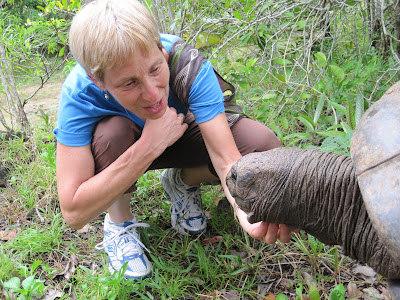 This week I gave my tenth presentation to a Rotary club in Mauritius. Giving presentations is a part of my scholarship that has been incredibly rewarding. In my presentation I talk a bit about myself - where I'm from, my family, my educational background and study abroad.
This week I gave my tenth presentation to a Rotary club in Mauritius. Giving presentations is a part of my scholarship that has been incredibly rewarding. In my presentation I talk a bit about myself - where I'm from, my family, my educational background and study abroad. Then I discuss the Ambassadorial Scholarship - what the scholarship entails and what the goals are as defined by Rotary. I talk about why I chose to come to Mauritius. I tell the Rotary clubs here a bit about my sponsor Rotary club in Rancho Cucamonga and the recent projects they have done. I also talk about the recent projects of my host club in Mauritius, the Rotary of Curepipe. Finally, I discuss what I have been doing in Mauritius - the courses I've been taking, my internship at the Committee on Poverty Association, my involvement with Rotary and Rotaract and my general exploration of the Island through hiking, scuba, etc.
Then I discuss the Ambassadorial Scholarship - what the scholarship entails and what the goals are as defined by Rotary. I talk about why I chose to come to Mauritius. I tell the Rotary clubs here a bit about my sponsor Rotary club in Rancho Cucamonga and the recent projects they have done. I also talk about the recent projects of my host club in Mauritius, the Rotary of Curepipe. Finally, I discuss what I have been doing in Mauritius - the courses I've been taking, my internship at the Committee on Poverty Association, my involvement with Rotary and Rotaract and my general exploration of the Island through hiking, scuba, etc.My favorite part about the presentations are the questions I receive from Rotarians. Many share stories of meeting Americans and having to show them a world map in order for the Americans to have a concept of the location of Mauritius and want to know how I came to found out about it. The answer is mainly from living in South Africa not from any geography lesson I learned in school. Also, Mauritius is mentioned in economic development texts so I did come across it in college courses. Often people ask why I would want to study in Mauritius when most Mauritius wish to study in America. I explain that while my course work is a part of my scholarship that it is not the main reason I am here. One of the goals of the scholarship is to increase culture understanding through a geographic diversity of scholars. Mauritius has taught me a lot about what it means to be a developing nation that is celebrated in the international community as an African success story but continues to struggle with its location in a global market economy. After all, Mauritius has no natural resources and gives tax breaks to foreign companies in order to increase investment while attempting to maintain a welfare state which includes free education and health care for all. And, with everything Mauritius has to teach me about development and living in a truly multicultural society, I wanted to be able to teach Americans about a place of which many have not heard.
When discussing some of the projects my sponsor Rotary club has done, some people are surprised to hear that poverty exists in America. It has been interesting to see how American film and television has distorted peoples understanding of my country.
Another question I like is "what will you tell people about Mauritius when you get back?" but you will have to wait a few more months to get my answer to that...
Another question I like is "what will you tell people about Mauritius when you get back?" but you will have to wait a few more months to get my answer to that...






























 Pictured above is the endemic and endangered Pink Pigeon which has been brought back from the brink of extinction (in 1991 only 10 birds remained.) Extinct birds which once living in Mauritius include the Dodo, Blue Pigeon, Broad-billed Parrot, Grey Parrot,
Pictured above is the endemic and endangered Pink Pigeon which has been brought back from the brink of extinction (in 1991 only 10 birds remained.) Extinct birds which once living in Mauritius include the Dodo, Blue Pigeon, Broad-billed Parrot, Grey Parrot, 


















